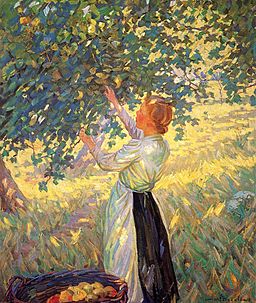Foraging Wild Edibles - Hunting for Wild Food and Medicinal Plants
Foraging wild edibles is not only a survival strategy in emergency situations or in case of a catastrophe like an apocalypse, but it can also inspire you to find new food sources and develop different food tastes.

Just some distance away from an urban landscape is the wilderness, maybe thick forests, gardens, or simply unknown areas where wild plants grow. Many of these plants and weeds may be growing in your yard or garden. If you want to know how to survive by foraging, you should arm yourself with knowledge to identify the plants.
Some Edible Wild Plants
Many wild plants are poisonous, including some varieties of mushrooms. Some wild edibles are eaten raw, others may need cooking and some are inedible. If you are foraging wild edibles, keep a lookout for:
- Chickweed — You can eat both flowers and leaves. Chickweed also has medicinal uses as the chopped weed treats cuts, burns and rashes.
- Violet — Leaves and flowers are edible, but avoid yellow flowers.
- Purple Dead Nettle — Also called Red Dead Nettle, its leaves, stems and flowers are edible.
- Garlic
Mustard — With a strong garlic flavor, these leaves taste good lightly
cooked or raw if you like garlic. The plants with larger leaves have
taproots, which taste like horseradish.
- Stinging Nettles — You should harvest these only wearing gloves as the nettles do sting. The plant and its fibrous roots are edible after cooking.
- Miners lettuce — This green is a delicious salad alternative and you can eat it raw or cooked.
- Japanese Knotweed — A wild edible, it has a lemony flavor and is best if plucked when still young.
- Onion Grass — It resembles and tastes similar to chives.
- Dandelion — The ubiquitous weed grows almost everywhere. You eat the greens raw, while you eat the other parts of the plant after cooking them.
- Black-Eyed Susan — This plant has many medicinal uses and you can eat the greens after cooking them.
- Agave — Though it looks like cactus, agave is not from the cactus family. You should cook the flowers and buds before eating. The flower stalks are a source of liquid, which you can drink in small quantities.
- Wild Carrot — The wild carrot looks similar to its cultivated counterpart. The roots are flavorful and edible when young, but you must be able to identify this plant correctly as similar looking plants are poisonous.
- Beechnut — With a burry surface, the actual nut is sweet, edible and highly nutritious. You can roast the beechnut until dry, brown and hard, grind the nut and use the powder to substitute for coffee.
- Purslane — This weed is edible and restaurant menus now sometimes offer this as a gourmet choice. It has a lemony taste and is a powerhouse of nutrients.
- Waterleaf — The whole plant is edible and cooked greens make a delicious side.
- Burdock — This wild food source looks a lot like rhubarb. You can eat the immature flower stalks raw and the roots either raw or cooked.
- Blueberries — These berries, also called huckleberries and bilberries, grow abundantly in the wild. The berries and the leaves are both edible.
Innumerable varieties of mushrooms and fruits also grow in the wild. You should learn to distinguish the edible ones from the poisonous ones.
Where to Go Foraging Wild Edibles
You should select safe areas for foraging wild edibles. Usually places near fresh bodies of water like rivers, streams and waterfalls have plush vegetation, but be sure that the water is clean, without effluents and pollutants.
Hazardous chemicals and dangerous contaminants from roads, toxic landfills, or chemical factories pollute the plants that grow next to them. In addition, pesticides often affect plants near farms, making them unhealthy for consumption.
The Benefits of Wild Edibles
Apart from the fact that you can find many edible plants in the wild, so that you will theoretically never go hungry, you can actually cut your grocery bill even if you are not in a catastrophe. You can still find fresh food that is nutritionally rich and healthy. Many plants are rich in omega-3 fatty acids, vitamins A, B and C, antioxidants, minerals and other micronutrients as well as protein, carbohydrates and fiber.
Foraging wild edibles can be a family bonding experience as a hobby and stand you in good stead for survival.
Return from Foraging Wild Edibles to SHTF Survival





New! Comments
Have your say about what you just read! Leave me a comment in the box below.